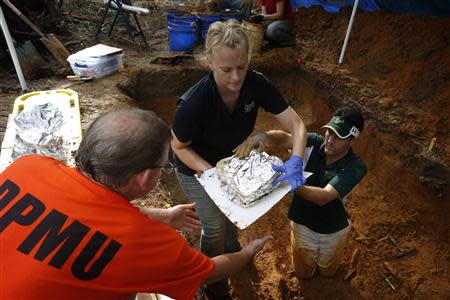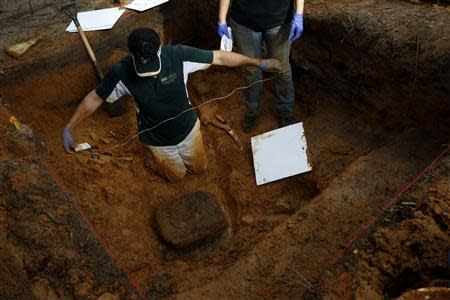Grim search for remains at ex-Florida reform school ends for now
By Bill Cotterell MARIANNA, Florida (Reuters) - Researchers completed on Tuesday their initial search for the remains of juveniles believed to have been secretly buried more than 50 years ago at a notorious former reform school in the Florida Panhandle. Anthropologists, archaeologists, graduate students from the University of South Florida (USF) and law-enforcement volunteers labored in sweltering heat at a gnat-swarmed burial ground near the Arthur G. Dozier School, which the state closed in 2011. Families of youths sent there over half a century ago have been badgering state officials for years, forcing an investigation of the area known as "boot hill," where ground-penetrating radar spotted at least 50 graves. Erin Kimmerle, a USF forensic anthropologist who worked with international teams unearthing evidence of mass graves used in Yugoslavian war-crimes trials, headed the excavation project that began on Saturday. She said about two-dozen scientists, students and Hillsborough County Sheriff's Office volunteers helped with the painstaking excavation in the pine-shrouded hillsides of rural Jackson County, near the Alabama border. Christian Wells, another USF anthropologist, said some small pieces of large bones were recovered on Saturday, along with some coffin hinges and brass pins from burial shrouds. More skeletal remains were unearthed on Sunday. The human remains will be examined for DNA evidence at the University of North Texas. Some DNA samples have been taken from family members of youths who died or simply disappeared from Dozier decades ago, and material from the bones will be checked against those records. Any remains that are identified will be turned over to families for reburial, and unidentified bones will be re-interred with scientific records kept in case any family members come forward. Kimmerle and USF researchers spent months going through old public records, news clippings and family accounts of boys who were sent to Dozier, a 1,400-acre (566-hectare) rural area. Former students, now in their 60s, tell of beatings, sexual abuse and sometimes disappearances of teenage boys - mostly African American- who were locked up for juvenile offenses in the 1930s through 1960s. The Florida Legislature put up $190,000 for the dig and the U.S. Department of Justice provided $423,000 for DNA matching. Kimmerle plans to bring her teams back to the scene later this year for further exploration of known graves and a search for more burial sites. The Florida Department of Law Enforcement ended a separate investigation into Dozier in 2010, saying it could not substantiate or refute claims that anyone held at the school died at the hands of staff. (Editing by Tom Brown and Tim Dobbyn)



